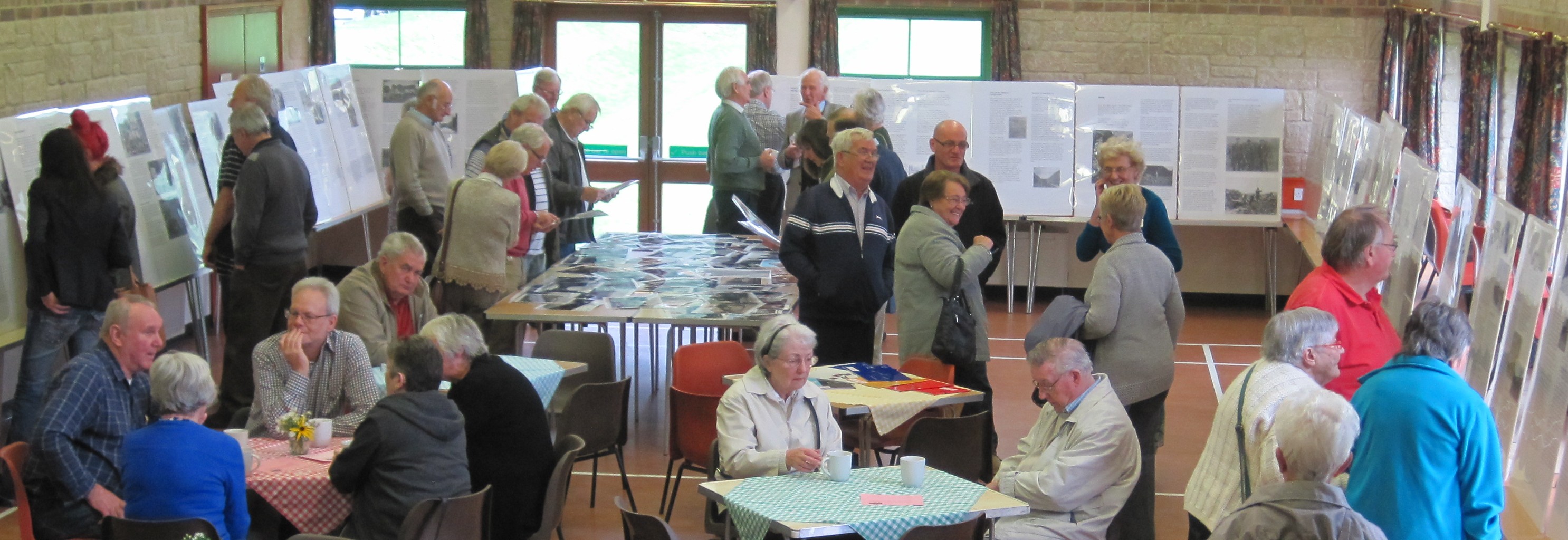
About 150 visitors squeezed into our village hall for our annual ‘Bygone Buriton’ exhibition in September this year (2013) – including people from as far away as Australia, Canada and the Republic of Ireland. Families from Yorkshire, Nottinghamshire, Hertfordshire , Kent and Sussex also came to see the displays – mingling with scores of residents and parishioners.
People always seem to love to come back to see their family roots and chat with long-lost friends and, as usual, we were able to make copies of more old photos and other information for our records. We now have over 2,900 images in our archives.
There was great interest in the new wartime projects which were unveiled this year.
Jim Lovell, who had been living along the Causeway on the outskirts of Petersfield at the time of the D-Day invasion in 1944, recalled that the roads around Buriton were full of vehicles – including tanks and large lorries. “They were mostly Canadians,” he added, “and they were parked all along both sides of the roads and up on the grassy banks.”
Other people can remember that Buriton School and the Five Bells were taken over by troops in the weeks leading up to D-Day – but we would love to hear from anyone else with memories of this period in our village history.
Heroes of the First World War were also recognised in the exhibition this year with a special presentation about all the men who had joined the forces. Almost 200 men had gone away at some time during the war – out of a total population of less than 800.
We want to find out what living conditions were like at home during the First World War, as well as finding out more about every one of the parishioners who took part.
We hope that some families may have letters, diaries and photographs that may help us.
Other highlights from this year’s exhibition included details of a Buriton man who was to be transported to New South Wales in 1821 to serve a fourteen year sentence for felony. His wife and three small children were appealing to the authorities for permission, and funding, to accompany him. We have yet to find out whether the request was successful – or what fate befell the family if it failed.
John Cary made a special trip to Buriton from Kenmare, southern Ireland ,for the local history exhibition. “I was evacuated here, out of London, when I was about three years old,” he recalled. “I stayed in the Rectory for a number of months in around 1941-43 and was very well looked after. I loved it here – but this is the first time I have ever been back.”
Also of great interest were a bound collection of parish magazines from 1890 to 1891 and a small notebook of historical jottings made by a former parish priest over fifty years ago.
All these new sources of information help us to build up a picture of life in years gone by and we are always very grateful to everyone who lets us have a look at old photographs and other memorabilia.
Please do get in touch if you think that you can help in any way …